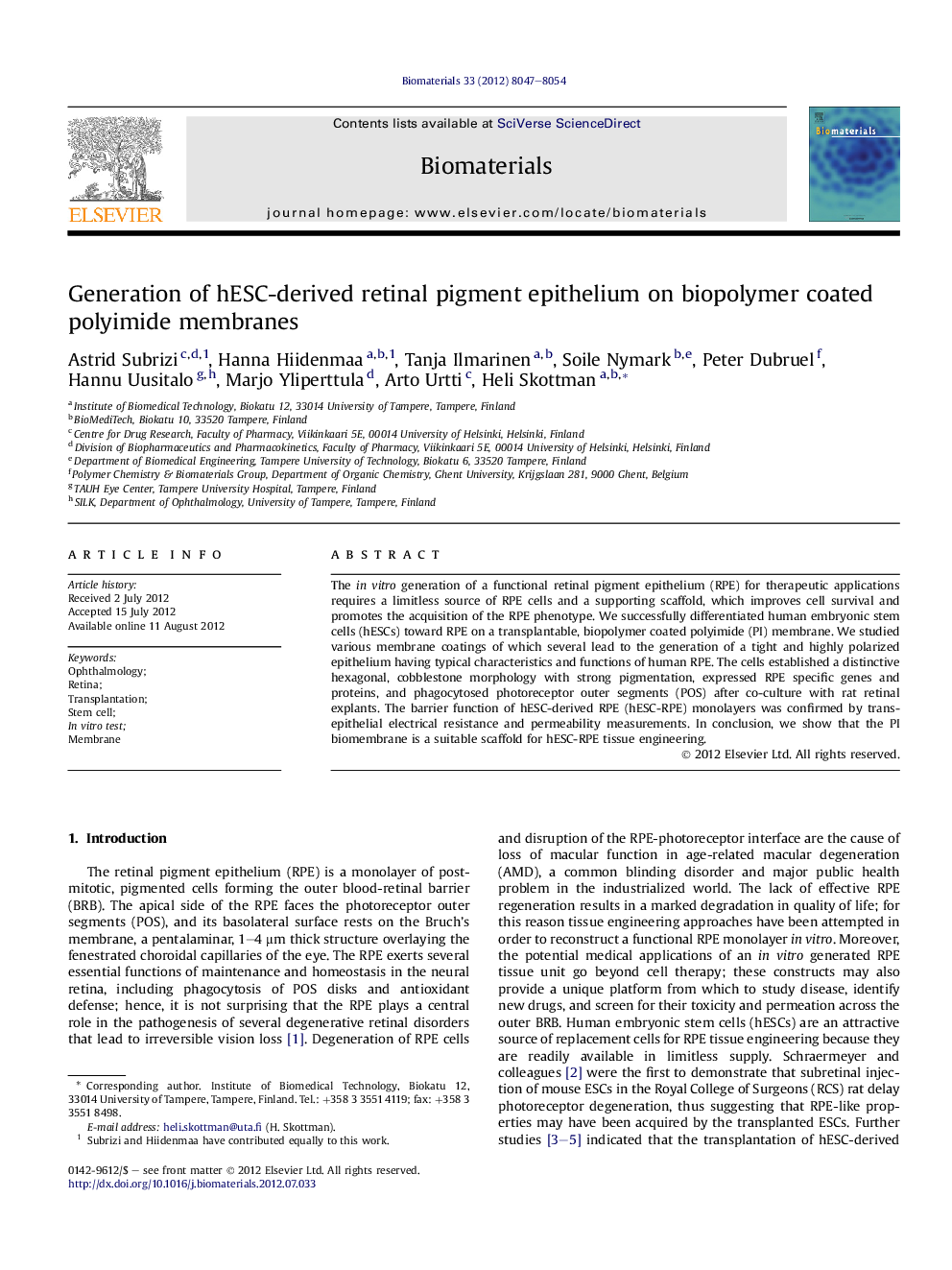| Article ID | Journal | Published Year | Pages | File Type |
|---|---|---|---|---|
| 10229092 | Biomaterials | 2012 | 8 Pages |
Abstract
The in vitro generation of a functional retinal pigment epithelium (RPE) for therapeutic applications requires a limitless source of RPE cells and a supporting scaffold, which improves cell survival and promotes the acquisition of the RPE phenotype. We successfully differentiated human embryonic stem cells (hESCs) toward RPE on a transplantable, biopolymer coated polyimide (PI) membrane. We studied various membrane coatings of which several lead to the generation of a tight and highly polarized epithelium having typical characteristics and functions of human RPE. The cells established a distinctive hexagonal, cobblestone morphology with strong pigmentation, expressed RPE specific genes and proteins, and phagocytosed photoreceptor outer segments (POS) after co-culture with rat retinal explants. The barrier function of hESC-derived RPE (hESC-RPE) monolayers was confirmed by transepithelial electrical resistance and permeability measurements. In conclusion, we show that the PI biomembrane is a suitable scaffold for hESC-RPE tissue engineering.
Related Topics
Physical Sciences and Engineering
Chemical Engineering
Bioengineering
Authors
Astrid Subrizi, Hanna Hiidenmaa, Tanja Ilmarinen, Soile Nymark, Peter Dubruel, Hannu Uusitalo, Marjo Yliperttula, Arto Urtti, Heli Skottman,
